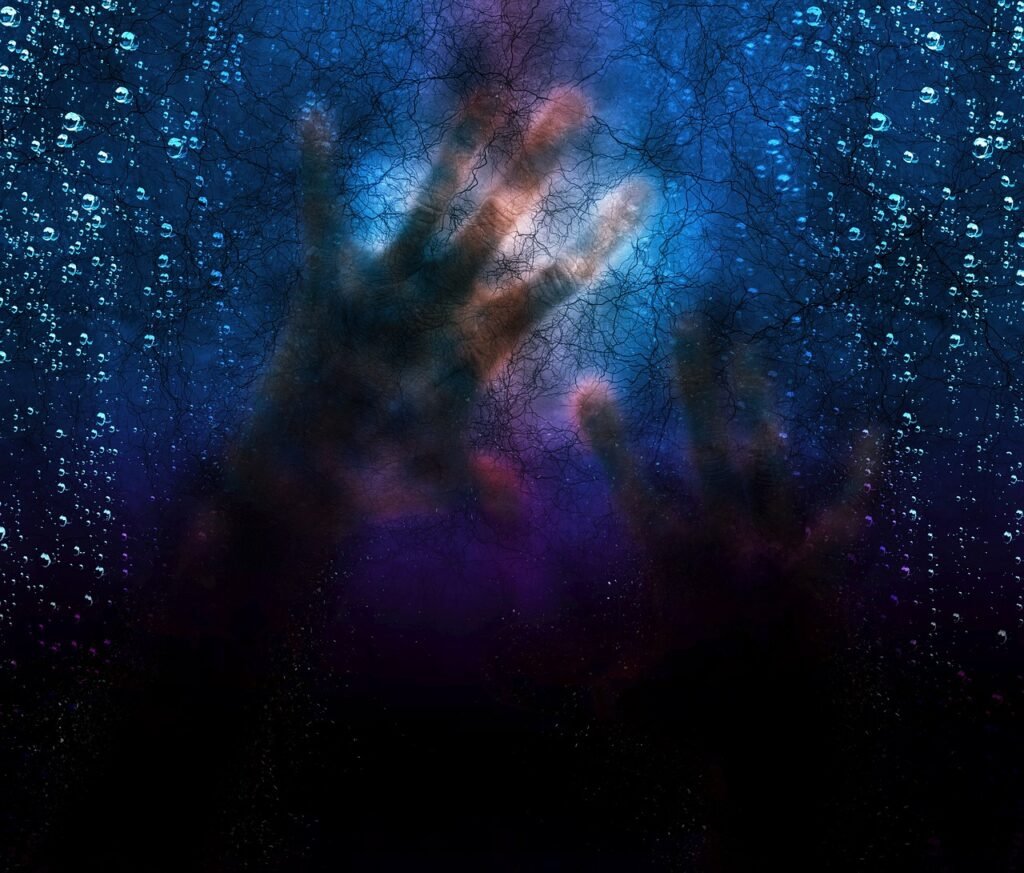
PART 2
Continuing from the previous part, we will now discover in detail about “Three Major Categories of Phobias”. Which are Specific Phobias, Social Phobias and Agoraphobia. At the end of this post, we will learn “how Hypnotherapy works on eradicating phobias, what are the potential benefits of Hypnotherapy while treating such chronic Phobias?”
Three Major Categories of Phobias
1. Specific Phobias
Specific phobias are a type of anxiety disorder characterized by an intense and irrational fear of a specific object, situation, or activity. These fears are excessive and can lead to avoidance behaviors and significant distress. There are numerous types of specific phobias, each related to a specific trigger. Here are some common types:
1. Animal Phobias: These involve a fear of specific animals. Common examples include fear of spiders (arachnophobia), fear of snakes (ophidiophobia), fear of dogs (cynophobia), and fear of insects (entomophobia).
2. Natural Environment Phobias: These phobias relate to specific natural phenomena. Examples include fear of heights (acrophobia), fear of thunder and lightning (astraphobia), and fear of water (hydrophobia).
3. Situational Phobias: These phobias involve fear of specific situations or circumstances. Examples include fear of flying (aviophobia), fear of enclosed spaces (claustrophobia), fear of elevators (elevatorphobia), and fear of bridges (gephyrophobia).
4. Medical Phobias: These phobias are related to specific medical situations or procedures. Examples include fear of injections or needles (trypanophobia), fear of blood (hemophobia), and fear of dentists (dentophobia).
5. Social Phobias: While social phobia is a broader category, certain specific social situations can trigger phobic reactions. For instance, fear of public speaking (glossophobia) or fear of eating or drinking in public (social eating phobia).
6. Bodily Phobias: These phobias are centered around specific bodily functions or sensations. Examples include fear of vomiting (emetophobia), fear of choking (pseudodysphagia), and fear of fainting (asthenophobia).
7. Specific Object Phobias: These involve fear of specific objects that might not fall into the above categories. Examples include fear of balloons (globophobia), fear of buttons (koumpounophobia), and fear of clowns (coulrophobia).
8. Sensory Phobias: These phobias are related to sensory experiences. For instance, fear of loud sounds (phonophobia) or fear of certain textures (haphephobia).
9. Technology Phobias: With advancements in technology, some specific phobias have emerged, such as fear of computers (cyberphobia), fear of smartphones (nomophobia), and fear of robots (robophobia).
10. Environmental Phobias: These phobias are related to specific environments or settings. Examples include fear of the dark (nyctophobia), fear of germs or dirt (mysophobia), and fear of being alone (autophobia).

2. Social Phobia
Social phobia, also known as social anxiety disorder, is an anxiety disorder characterized by an intense fear of social situations and the fear of being negatively judged, embarrassed, or humiliated in front of others. This fear can be debilitating and significantly impact a person’s ability to engage in social interactions and everyday activities. There are various types of social phobia, each with its own unique characteristics:
1. Performance Anxiety: This type of social phobia involves a fear of performing or presenting in front of others. It can manifest as anxiety about public speaking, giving presentations, acting on stage, or performing any task that requires being the center of attention.
2. Interpersonal Interaction: Individuals with this type of social phobia experience anxiety in one-on-one interactions or small group settings. They may fear conversations, making eye contact, initiating or maintaining conversations, or expressing themselves in social situations.
3. Being Observed: This type of social phobia is centered around the fear of being observed while doing routine activities, such as eating, drinking, or writing. The fear often stems from concerns about being judged or scrutinized by others.
4. Meeting New People: Some individuals with social phobia have a specific fear of meeting new people or strangers. Initiating conversations, making introductions, and participating in social gatherings with unfamiliar individuals can be particularly distressing.
5. Dating and Romantic Relationships: This type involves a fear of dating, forming romantic relationships, or engaging in activities related to romantic interests. Fear of rejection, embarrassment, or the pressure to impress can contribute to this form of social phobia.
6. Public Places: People with this type of social phobia experience anxiety in public spaces, such as restaurants, stores, or public transportation. The fear often revolves around being observed or judged by strangers in these settings.
7. Virtual Interactions: With the rise of online communication, some individuals may experience social phobia in virtual spaces as well. This can involve anxiety related to participating in video calls, posting on social media, or engaging in online discussions.
8. Physical Appearance: This type of social phobia involves an excessive fear of being judged negatively based on one’s physical appearance. It can lead to avoidance of situations where appearance might come under scrutiny, such as social events or gatherings.
9. Public Performance: While similar to performance anxiety, this type extends beyond just speaking and includes any type of public display of skills, talents, or abilities. This might involve playing a musical instrument, showcasing artwork, or participating in sports.
Please understand that, social phobia can manifest in a combination of these types, and individuals may experience varying degrees of distress and impairment in different social situations.

3. Agoraphobia
Agoraphobia is a type of anxiety disorder characterized by a fear of situations or places where escape might be difficult or help might not be readily available in case of a panic attack or other emergency. People with agoraphobia often avoid certain places or situations that they associate with feeling trapped, embarrassed, or panicked. Here are some common types or situations related to agoraphobia:
1. Public Spaces: This is one of the most common forms of agoraphobia. It involves a fear of being in crowded places such as shopping malls, theaters, or public transportation like buses and trains.
2. Open Spaces: Some individuals with agoraphobia fear being in open spaces, such as large parks, open fields, or any area where they might feel exposed and vulnerable.
3. Enclosed Spaces: This type involves a fear of being in enclosed or confined spaces, such as elevators, small rooms, or tunnels. This is often referred to as claustrophobia, which can sometimes overlap with agoraphobia.
4. Being Outside the Home Alone: Individuals with this type of agoraphobia may fear leaving their home alone or being outside without a trusted companion. This fear can extend to situations like walking alone or driving without someone else in the vehicle.
5. Traveling: Some people with agoraphobia fear traveling long distances, particularly if it involves being far from their safe zone or support network. This can include fear of flying, fear of driving on highways, or fear of taking public transportation.
6. Visiting Specific Places: Agoraphobia can also be triggered by specific places where a person has experienced panic attacks or intense anxiety before. This might include places like specific stores, restaurants, or locations associated with past traumatic experiences.
7. Fear of Having a Panic Attack: The fear of having a panic attack itself can contribute to agoraphobia. People might avoid situations where they believe a panic attack is more likely to occur.
It’s important to note that agoraphobia can vary widely from person to person, and individuals may experience a combination of these fears. The common theme is the avoidance of situations or places due to the fear of experiencing intense anxiety or panic.
Hypnotherapy to Cure Phobias: Unveiling the Power of the Mind
Phobias, those intense and irrational fears that seem to grip us beyond reason, can cast a shadow over our lives. From the fear of heights to the dread of spiders, phobias can lead to distress, avoidance, and missed opportunities. While there are various approaches to managing phobias, one intriguing avenue is hypnotherapy—a therapeutic technique that taps into the power of the mind to alleviate these fears.
Understanding Phobias: A Deeper Dive
Before delving into how hypnotherapy can help, let’s revisit what phobias are. Phobias are anxiety disorders characterized by an overwhelming fear of specific objects, situations, or activities. From public speaking and flying to spiders and confined spaces, these fears often trigger intense panic and the instinct to avoid the triggering stimuli at all costs.
The Power of Hypnotherapy: Unleashing the Subconscious Mind
Hypnotherapy, a type of therapy that uses guided relaxation and focused attention to achieve a heightened state of awareness, has gained attention for its potential in addressing phobias. This therapy doesn’t involve making you quack like a duck or cluck like a chicken, as often portrayed in entertainment. Instead, it works by accessing the subconscious mind, where beliefs, memories, and emotions are stored.
How Hypnotherapy Works for Phobias
1. Identifying the Root Cause: Hypnotherapy aims to uncover the root cause of the phobia, often buried deep within the subconscious. By accessing this underlying trigger, a skilled hypnotherapist can work with you to understand the origin of your fear.
2. Reframing Perceptions: Once the cause is identified, the hypnotherapist can help you reframe your perceptions. This involves altering negative thought patterns and associations linked to the phobia. Through guided imagery and suggestion, you can replace fear with calmness and confidence.
3. Gradual Desensitization: Hypnotherapy can facilitate gradual exposure to the phobia in a controlled environment. This desensitization process helps your mind adapt to the fear, reducing its intensity over time.
4. Building Resilience: Hypnotherapy isn’t about erasing your fear entirely. Instead, it focuses on equipping you with coping mechanisms and mental tools to manage your reactions when confronted with the phobia.
Benefits of Hypnotherapy for Phobias
1. Holistic Approach: Hypnotherapy addresses the psychological and emotional aspects of phobias, providing a comprehensive solution.
2. Personalized Treatment: Each hypnotherapy session is tailored to your specific phobia, ensuring a personalized and effective approach.
3. Non-Invasive: Unlike medications or invasive treatments, hypnotherapy is a non-intrusive method to address phobias.
4. Long-Term Results: By working on the underlying causes, hypnotherapy aims to bring about lasting changes, allowing you to face your fears with greater ease.
Seeking Professional Help
While hypnotherapy offers promise, it’s important to choose a certified and experienced hypnotherapist. Collaborate with a mental health professional who specializes in treating phobias through hypnotherapy to ensure safe and effective treatment.
In the journey to conquer your phobias, hypnotherapy can serve as a powerful ally, empowering you to rewrite the script of your fears. By tapping into the depths of your mind, this therapy holds the potential to transform your relationship with the triggers that have held you back, ultimately granting you the freedom to live life unencumbered by irrational fears. Contact us today to book your sessions

Leave a Reply